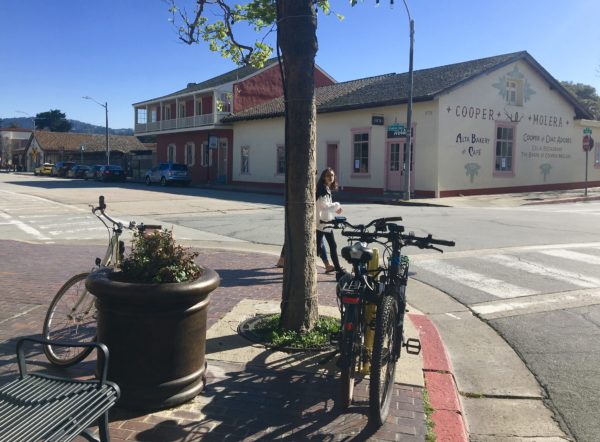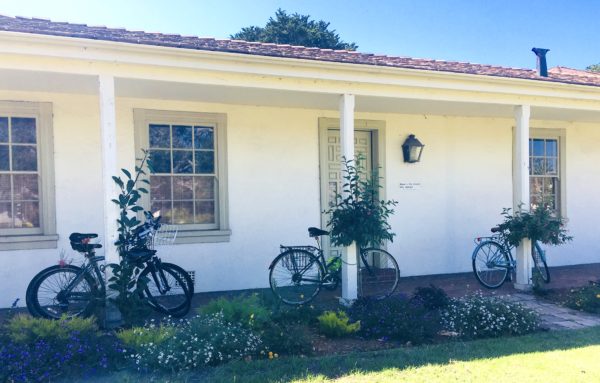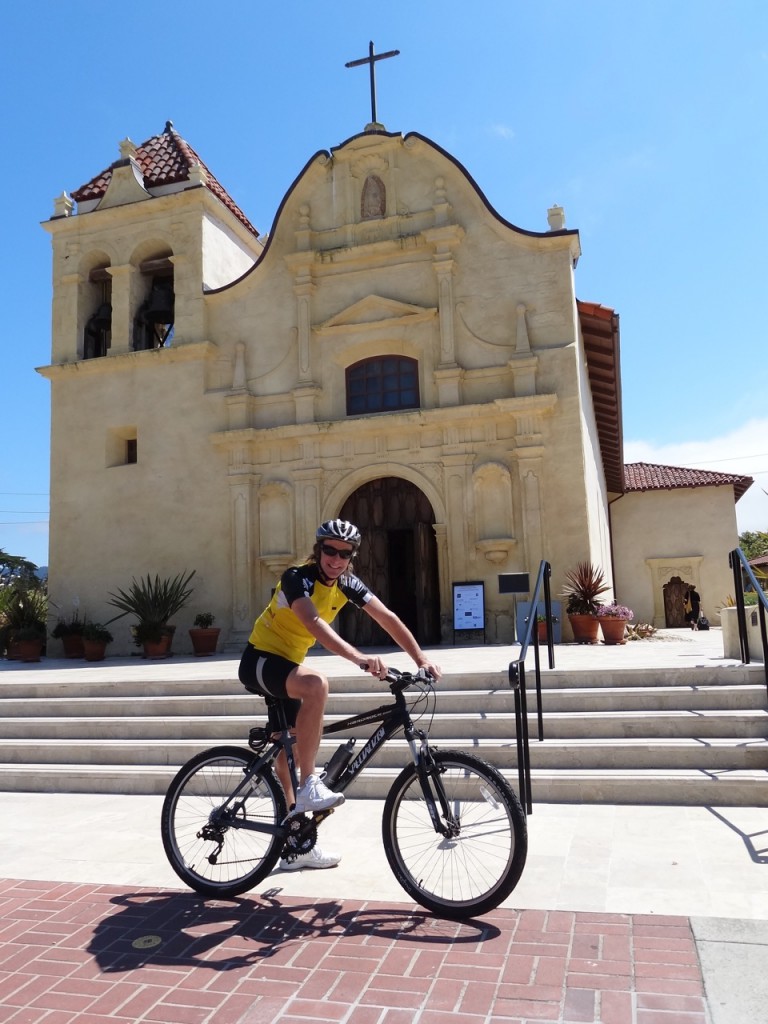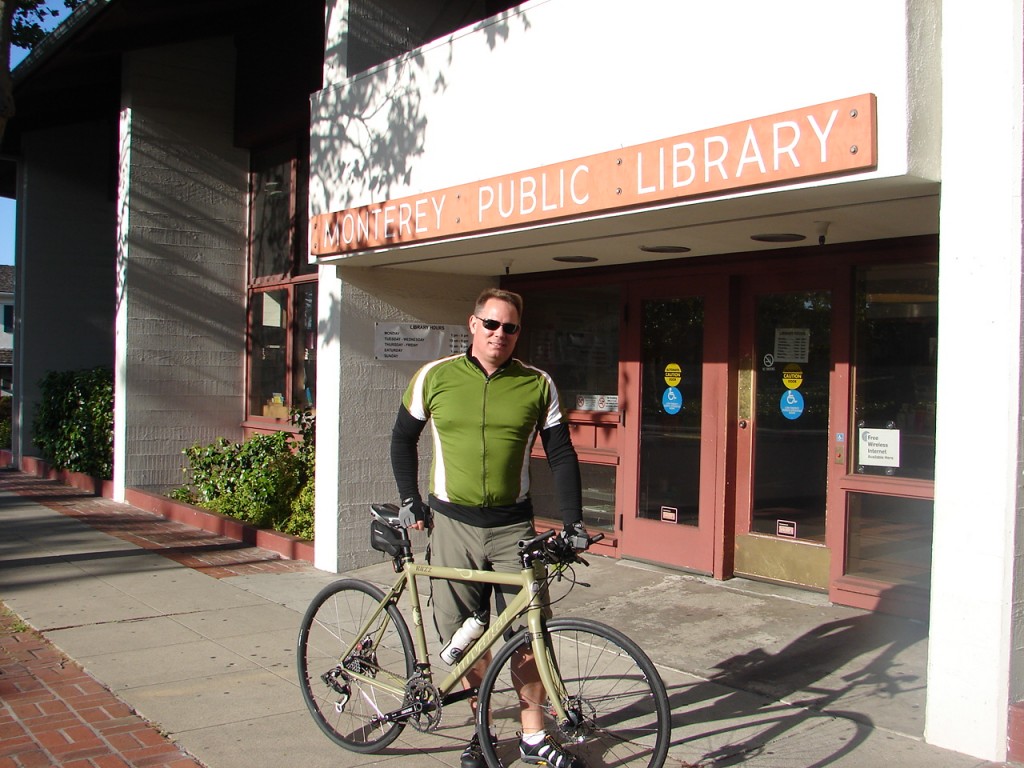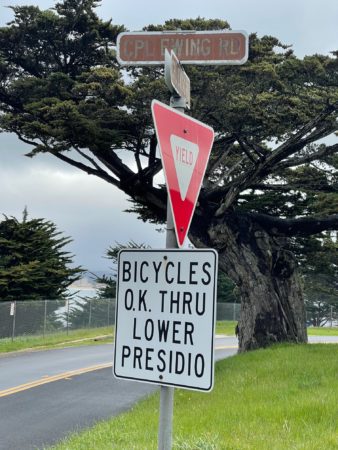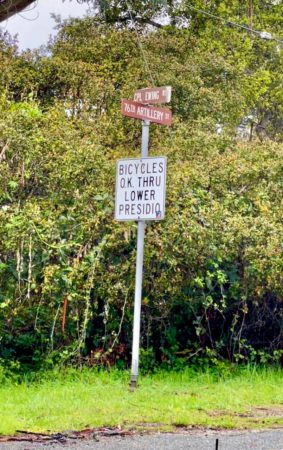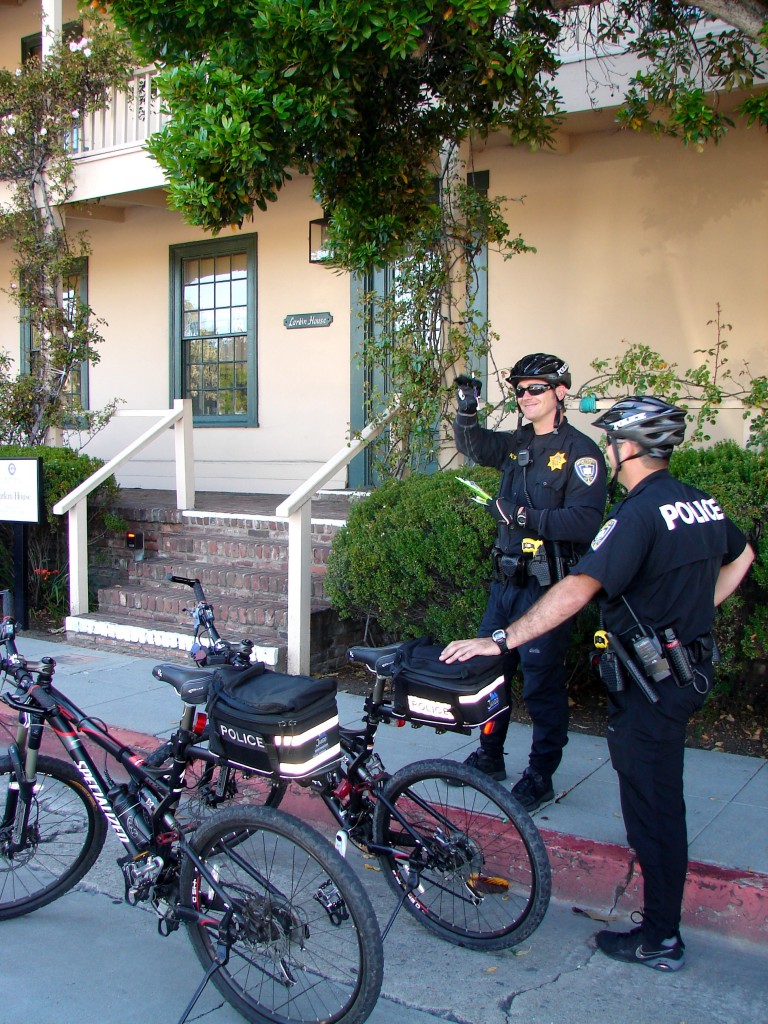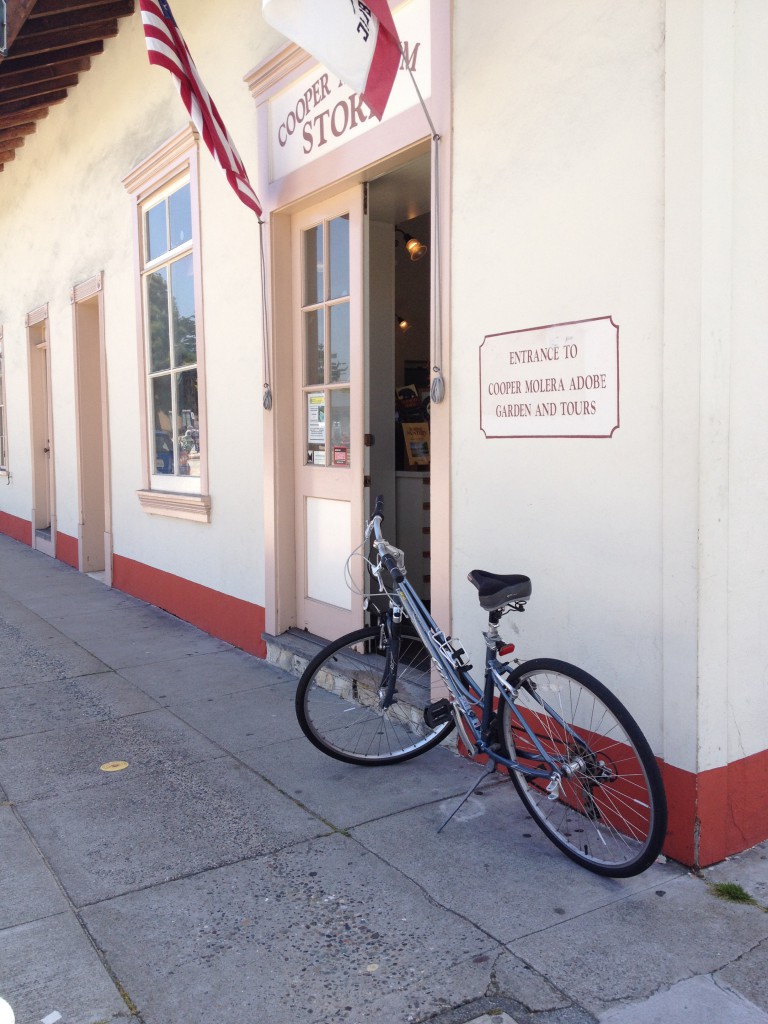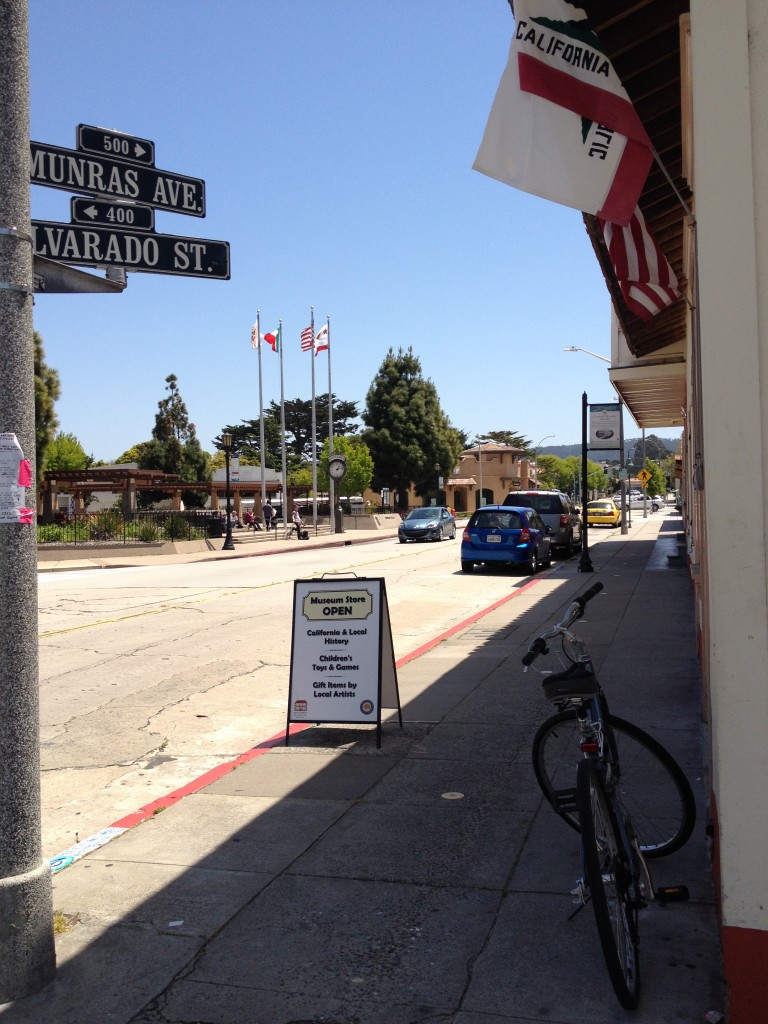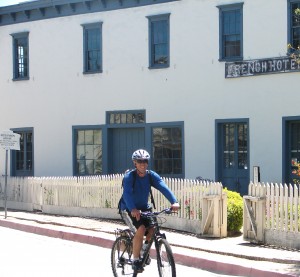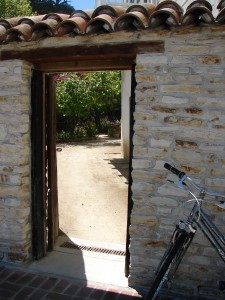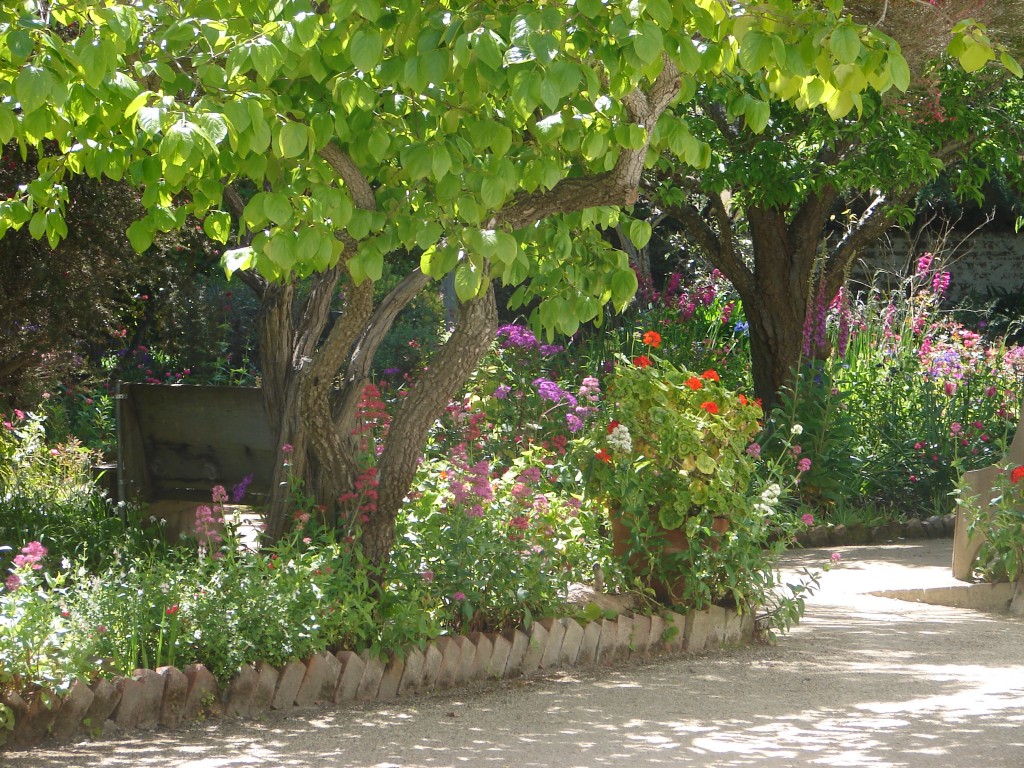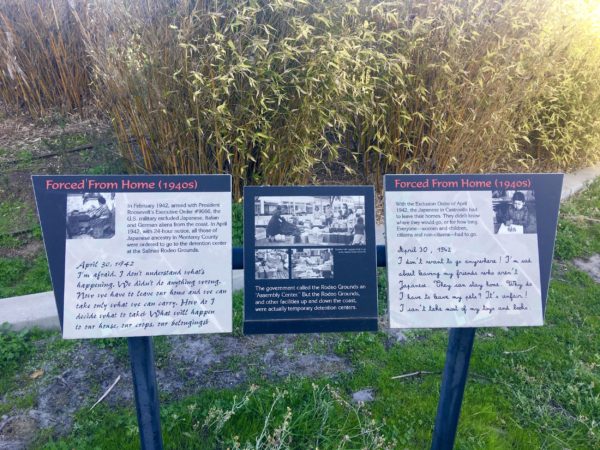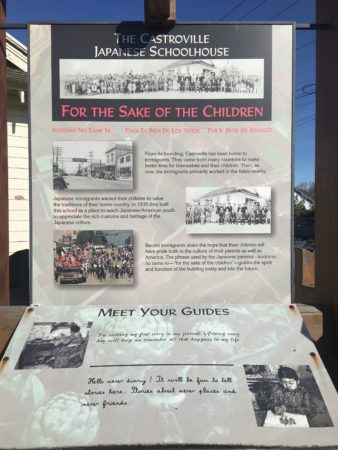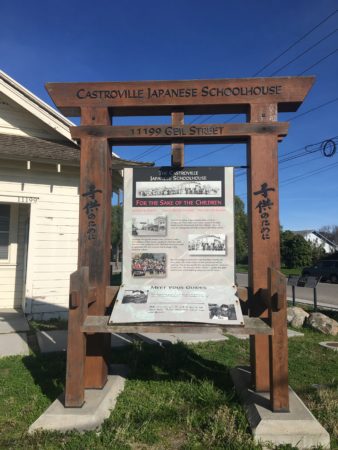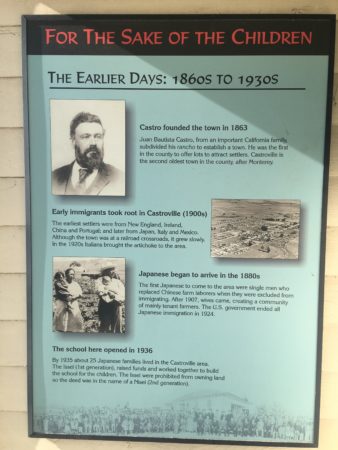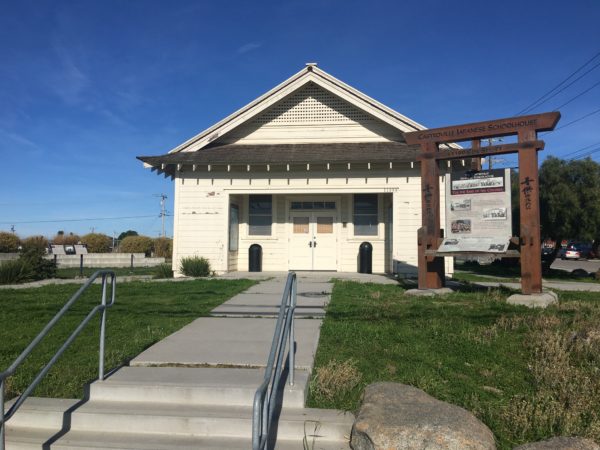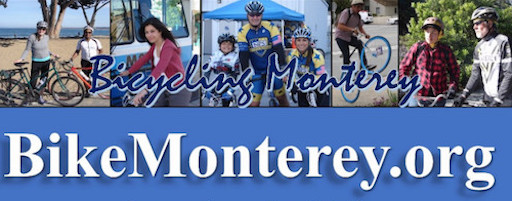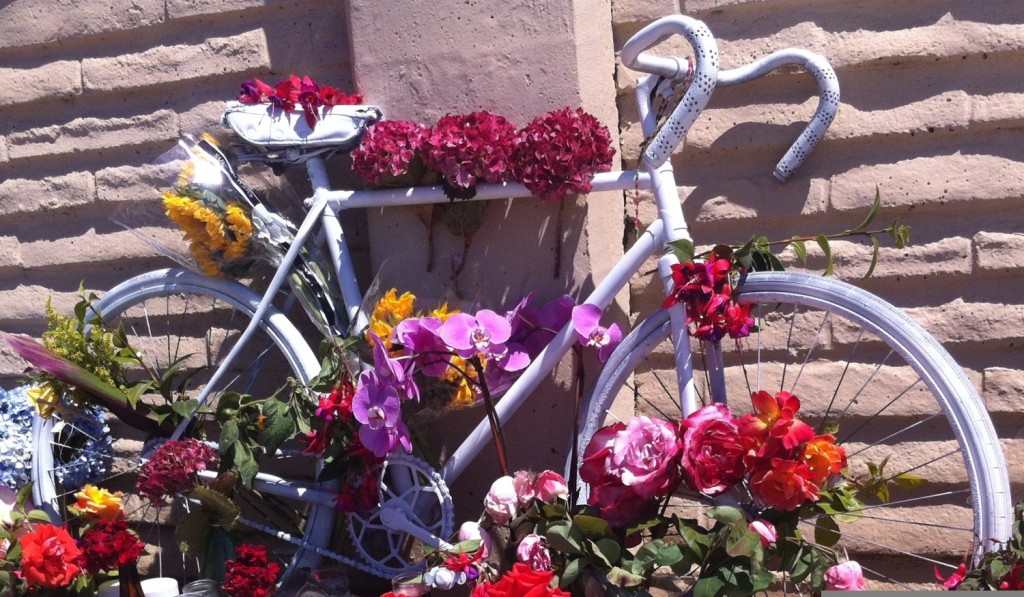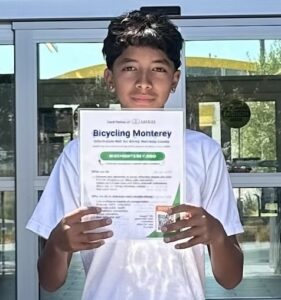11. Cycling to Monterey County’s History Spots
This guide, provided as a public service, was first published in 2009, with many subsequent updates. For additional updates, contact us. To return to the portal page of the Tips for Bicycling Monterey County 20-section guide, click here.
The Monterey County Historical Society celebrated in May 2024 the opening of Victorian Gumper-Castro Memorial Library—which is a reading room, not a lending library. It is planned to be opened to the public by appointment only, Monday through Friday, limited hours. Learn more: https://mchsmuseum.com/gumper-castro-library/
Related story by David Schmalz in Monterey County Now: https://www.montereycountynow.com/entertainment/art/the-monterey-county-historical-society-is-unveiling-its-reading-room-years-in-the-making/article_a9c6f0d0-12f2-11ef-9618-cf74ff426ab3.html
Kindly note: In 2023 we updated some but not all links to the websites we refer to for more information.
When other websites are redesigned, sometimes their links still work, other times the links to them will now lead to an error page. Please report broken links. For additional updated info, please check with the sources referred to.
Our tips below can help
launch you on some
Monterey County history adventures!
Why do they call it “Old Monterey”? What’s up with “Steinbeck Country”? And where’s that 1791 mission in Soledad?
One of the greatest things about traveling by bicycle is that you notice your surroundings more. And history buffs will surely notice the many signs of early California history throughout Monterey County.
You may have just an hour or so. If that’s the case, there are places in this post suitable for short visits.
To get you started on other explorations, check out information below about Castroville, Fort Ord, Monterey, Salinas, Soledad, and other historic locations in the county.
Above: At the Memorial Day 2018 concert on the lawn of historic Colton Hall, some folks locked their bicycles to the posts of the City of Monterey building picture above—office of the mayor, city manager, and city council. (Bike valet parking and/or more bike racks needed.)
City of Monterey
In 1776 Spain named Monterey the capital of its Baja (lower) California and Alta (upper) California. In 1821 Mexico won its war for independence from Spain, and California subsequently pledged its allegiance to the Mexican government. In 1846 the Mexican-American War began, and in 1848 the Treaty of Guadalupe Hidalgo was signed. In 1850, California was admitted to the Union, becoming the 31st of the now-50 United States of America; the state’s Admission Day was September 9, 1850.
“At the time of its completion, on March 8, 1849, Colton Hall was the largest city building west of the Rockies,” reported David Schmalz for Monterey County Now on September 26, 2025 in https://www.montereycountynow.com/blogs/news_blog/state-supreme-court-to-hear-oral-arguments-in-colton-hall-oct-8/article_8284e1d5-ac8f-4d4c-94b6-0384e16a8757.html
As reported by in the Monterey County Weekly on July 27, 2023, “Seven flags that fly over Monterey tell the story of the city’s past and present.” https://www.montereycountyweekly.com/people/831/seven-flags-that-fly-over-monterey-tell-the-story-of-the-city-s-past-and/article_fd2feb72-2bfe-11ee-95f6-2f25e13aba3e.html
Visit the Monterey County Historical Society website to learn more.
Australian visitor Carey Beebe at the Royal Presidio Chapel, Monterey.
All around Monterey…
Do you like biking the Monterey Bay coastal recreation trail? A City of Monterey video telling some history of the trail is posted on the city’s Youtube channel; click here.
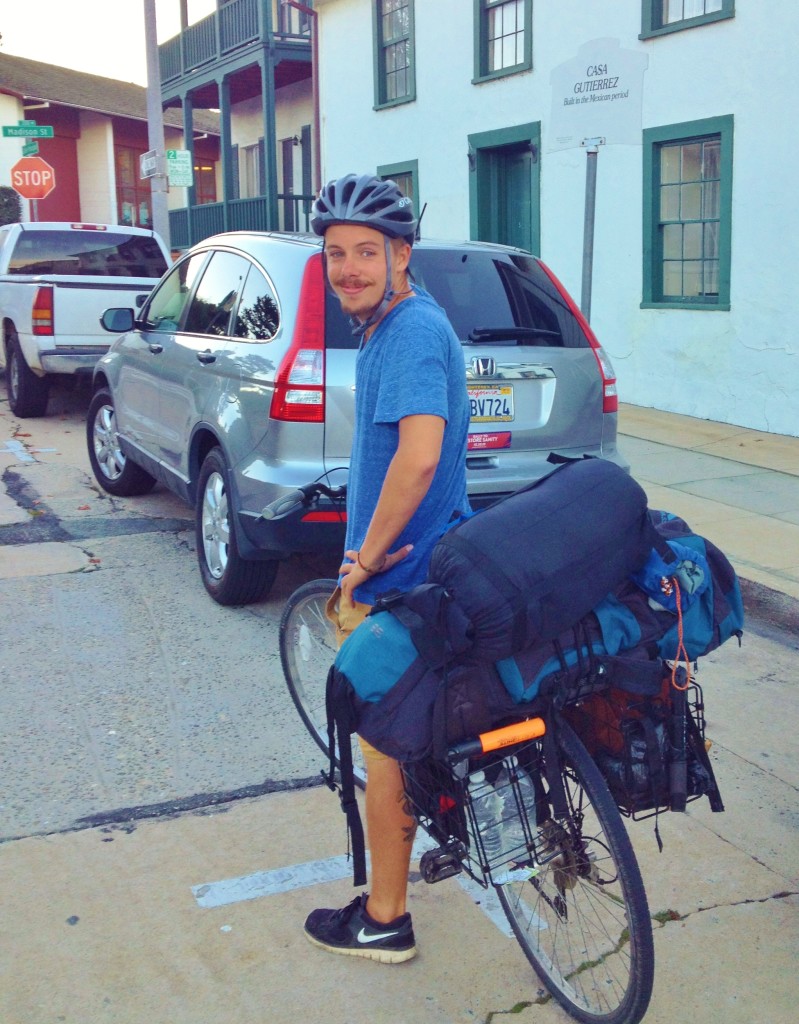
The official City of Monterey website is one place to begin exploring Monterey history. Check out the City of Monterey museums: https://monterey.org/city_facilities/museums/index.php. Explore other local history spots, including the Royal Presidio Chapel (AKA San Carlos Cathedral) and Heritage Museum, En Encinal Cemetery, and so much more.
John Steinbeck fans will be interested in City of Monterey locations such as Cannery Row and the Lara-Soto Adobe located on the campus of the Middlebury Institute of International Studies (MIIS). The Lara-Soto Adobe was Steinbeck’s home for a short time in 1944-45. For more on Steinbeck, refer to the Salinas section below.
The California History Room and Archives https://monterey.org/library/services/research/history_room/index.php at the City of Monterey Public Library are a treasure chest for history researchers. Something about biking makes many of us want to sing while we’re pedaling! And when I wanted to find an early California children’s song for which the lyrics escaped me, where did I go? To the California History Room at the library! Among treasures there: Storied land : community and memory in Monterey by John Walton.
Presidio of Monterey Museum
https://monterey.org/city_facilities/museums/discover_museums/presidio_of_monterey_museum.php
A new exhibit opening June 17, 2023 explores the history of the Buffalo Soldiers’ time in Monterey, as reported by Dave Faries in the Monterey County Weekly on June 15, 2023: “City historian Jordan Leininger spent three years tracing the story of Buffalo Soldiers in Monterey” https://www.montereycountyweekly.com/people/831/city-historian-jordan-leininger-spent-three-years-tracing-the-story-of-buffalo-soldiers-in-monterey/article_4fe208b0-0af2-11ee-8d30-f7cc907281ec.html. Also see Pam Marino’s MCW piece published June 17, 2023: “A new exhibit explores the history of the Buffalo Soldiers’ time in Monterey” https://www.montereycountyweekly.com/opinion/mcnow_intro/a-new-exhibit-explores-the-history-of-the-buffalo-soldiers-time-in-monterey/article_adc52f36-0c7b-11ee-92ca-ff0e9eb9eafb.html.
Photos: Lower Presidio Park
At the Monterey State Historic Sites…
Where to get the most up-to-date info on Monterey State Historic Sites? Call 831-649-7118 with questions; you may want to speak with Jeannie Sturges, who has a wealth of info to share about local history sites. First, though, please refer to the California State Parks website, where (as of June 17, 2023), you can look up parks by county, e.g., Monterey: https://www.parks.ca.gov/ParkIndex/
There is an entire menu of web pages about the various historic sites, which are sure to pique a history buff’s interest! As of June 2012, two pages remain especially relevant:
http://www.parks.ca.gov/mshp – The address takes you to this default page, which includes directions http://www.parks.ca.gov/default.asp?page_id=575
And this page includes upcoming events: http://www.parks.ca.gov/?page_id=24072
As of June 2012, California budget cuts mean some historic sites remain closed, others open on weekends only. That needn’t keep you from experiencing Monterey’s history via those open sites, and in other ways, as described on this page.
Reminder: Check in with http://www.parks.ca.gov/mshp for the latest news, then phone 831-649-7118 with any questions. As of 6/19/12, among opportunities are Historic Walking Tours and Custom House & Pacific House tours on Fri-Sat-Sun (with free admission to Monterey County residents the last Sunday of the month); and Robert Louis Stevenson House tours on Saturdays and the fourth Sunday of the month. There are special house tours of Larkin House and Cooper Molera Adobe on Fri-Sat-Sun too.
Below: Monterey Police Officers on bikes, at Larkin House on Calle Principal, Monterey.
What’s behind those walls?
The Cooper Molera Adobe
Seeing the adobe from the street, for many years, many people would never have guessed what was happening behind those walls. But many children have had the joy of a living history experience here during summer programs. And during the winter holiday season, Christmas in the Adobes includes this site.
For an update about the big changes to this site, see “Cooper Molera Adobe, one of the most iconic properties in Monterey, is coming back to life,” by David Schmalz in the 6/28/18 Monterey County Weekly.
Also known as “The Cooper House,” this historic adobe sits at the top of Alvarado Street, at the five-way intersection (including Munras and Alvarado). It is across the street from the Monterey’s downtown Monterey-Salinas Transit Center. (Taking an MST bus? Bicycles are transported free with a paying passenger. See Bicycling Monterey’s bike-and-ride section.)
The Stevenson House
Leaving the Cooper Molera adobe, bike along Pearl Street, which is on the left/north side of the Monterey-Salinas Transit Center. (You’ll bike between Ordway Pharmacy and the Transit Center.) Continue past the first stop sign. Then watch for little Houston Street on your right, just after Alfredo’s Cantina.
Houston is a one-way street, with little traffic.
Make a right on Houston Street, and you’ll soon come to this doorway to the Stevenson House gardens!
State Historic Site gardens are open, 7 days a week
Visit California Parks (parks.ca.gov) website’s Secret Gardens of Old Monterey web page.
Back in October 2010, all history gardens were open 7 days a week from 10-4.
The state’s website indicates, as of June 2012, that garden hours are extended from May through September to 9-5.
Enjoy lingering on the same soil, sniffing many of the same scents, and otherwise sharing in the beauty that early residents and visitors experienced.
A notable exception is that occasionally a garden may be rented on weekends. This would most often happen at the Memory Garden, at Cooper Molera sometimes, and at Stevenson House least often. Don’t let that stop you, as even if one garden is rented, the others will still be open for public enjoyment.
Custom House
The Custom House is commonly referred to as the oldest public building in California. Indeed, the Custom House is the State of California’s State Historic Landmark #1!
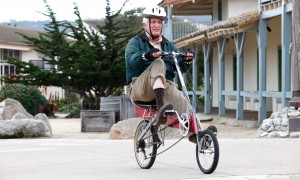 Bicyclist on the multi-use path alongside the Custom House, near the entrance to Old Fisherman’s Wharf/Wharf I.
Bicyclist on the multi-use path alongside the Custom House, near the entrance to Old Fisherman’s Wharf/Wharf I.
To learn more about the Custom House Plaza and other plazas in the City of Monterey–and about biking them–see “Where the plazas are….” on this site.
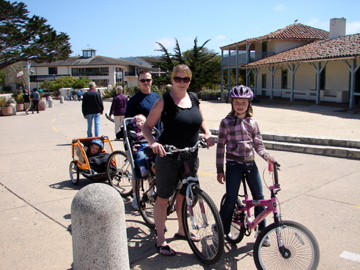 The Hetland family—Jeremy, Nichole, Autom, Aiden, and Aubrie—
The Hetland family—Jeremy, Nichole, Autom, Aiden, and Aubrie—
were Monterey County residents while military dad Jeremy was assigned here.
They are pictured biking in front of the historic Custom House.
http://twitter.com/BikeMonterey/status/478320508996288512
Self-led tours of State Historic Sites
You may pick up a copy of a map on the door at the Custom House, which accompanies a two-minute phone tour of historic sites in the downtown area. Call (831) 998-9458 for the audio tour, which includes:
- Custom House
- Pacific House
- First Brick House
- Old Whaling Station
- California’s First Theater
- Casa Soberanes
- Larkin House
- Cooper-Molera Adobe
- Robert Louis Stevenson House
- Casa de Oro (J. Boston Store)
Self-led tours of Path of History
Or, if you’re biking the Monterey Path of History with an iPod, you may first want to download the free audio history tour provided by the Monterey County Convention and Visitors Bureau: http://www.seemonterey.com/docs/main_media_gallery/podcasts/thumb/mccvb-path-of-history-tour.mp3
It’s the law: safety and earplug use
For safety and to avoid a ticket (see DMV website; refer to VC 27400), remember to bike with one earplug out. This is essential to staying alert to sounds around you!
http://www.instagram.com/p/Bl3cc__AMJJ/
Salinas, the Heart of Steinbeck Country
The official City of Salinas website has a brief intro on local history.
If you’re looking to make history connections with Nobel-winning author John Steinbeck, you don’t stop with Cannery Row in Monterey. You also go to the heart of Steinbeck Country, Salinas!
Visit Steinbeck’s birthplace and boyhood home, the Steinbeck House. Nearby, explore the National Steinbeck Center. You can also visit his gravesite at Garden of Memories. (And if you go to Garden of Memories, you’ll be very near some local biking experts, on Abbott Street: Doug Chandler Performance bike shop, and next-door neighbor Cycle Stop Honda, which is owned by Velo Club Monterey Answer Man Jan Valencia. Pedal over and say hi!)
At the National Steinbeck Center, not only is there history about Steinbeck, the Center has had opportunities to hear about the agricultural history of the Salinas Valley—Salad Bowl of America/the World. For updates check out the Steinbeck Center’s website.
For more tips on biking Salinas, the Monterey County seat, see the “Biking Salinas” section of this site.
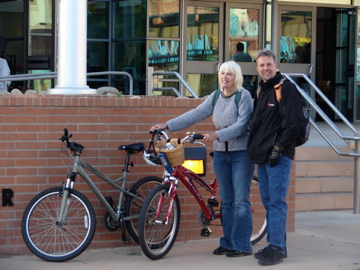 Linda and Matt Greenlaw on arrival at the National Steinbeck Center.
Linda and Matt Greenlaw on arrival at the National Steinbeck Center.
As residents of Salinas, they are able to catch the many changing exhibitions and activities at the Steinbeck.
Steve McShane organized a rolling historical lecture and tour of Salinas back on October 12, 2014. Brinig back that cool idea by contacting Steve for tips on organizing a new one in 2024!
More Monterey County history spots
The county is rich in history. This is just a sampling!
Castroville
Castroville Japanese Schoolhouse /
Castroville Nihon Gakko
Kodomo No Tame Ni / Para El Bien De Los Ninos / Per Il Bene De Ragazzi / For the Sake of the Children
The Castroville Japanese Schoolhouse, 11199 Geil Street, is listed in the National Registry of Historic Places: https://npgallery.nps.gov/AssetDetail/NRIS/95001127.
The school opened in 1935, and construction of the building was completed in 1936. In 1942 it was abandoned because of the World War II forced evacuation and internment of the Japanese. Not until the new millenium was the schoolhouse renovated, as celebrated in a ceremony December 2009. Walking the path around the schoolhouse provides an introduction to this history.
Learn much more: https://npgallery.nps.gov/NRHP/GetAsset/NRHP/95001127_text.
The schoolhouse is an easy biking distance from the eye-catching bicycle and pedestrian bridge that opened in 2018. It’s also a short ride from Castroville’s Andy Ausonio Library, a branch of Monterey County Free Libraries. For more Castroville tips, click here.
Bicycling Monterey’s photos above were shot on February 5, 2020. Maybe someone will be inspired to repaint the schoolhouse soon.
Fort Ord National Monument
In case you missed this in our Monterey County bicycling resources directory: Vine Cycle Tours also offers tours of Fort Ord National Monument, which includes military history. https://www.vinecycletours.com/fort-ord-tours
https://www.montereycountynow.com/people/831/an-e-bike-tour-of-the-former-fort-ord-brings-the-military-and-natural-history/article_14187d95-571e-424a-a500-cca5aa4875af.html
Fort Ord Warhorse Day annual festivities have typically included an 11-Mile Fort Ord Bike Ride. Margaret Davis of Friends of the Fort Ord Warhorse graciously provided written directions for this ride; click here. There you’ll also find highlights of the ride in a 7-minute, 27-second video by Lynn Moimboissee.
As Margaret points out, this is a nice route for most any day, not just on Fort Ord Warhorse Day. Enjoy!
Monterey County Agricultural and Rural Life Museum, King City
Visit the museum website — https://www.mcarlm.org — and plan a visit.
And the April 29, 2022 story by Amy Wu in the Salinas Californian, “Monterey County Agricultural and Rural Life Museum celebrates agricultural history.”
https://twitter.com/BikeMonterey/status/1529625904854728705?s=20&t=0bGwULdJZeigRLgY1EKjRA
Monterey-Salinas Transit’s Linear Jazz Museum
Monterey-Salinas Transit (MST/”The Bus”) has created a “first of its kind” in the nation history experience. In collaboration with the Monterey Jazz Festival, MST has developed a year-round linear jazz museum that features dramatic jazz-themed displays at 30 new custom-designed shelters along the route. Click here to learn more, including how to bike-and-ride this route.
Soledad
History spots abound in Monterey County, including the Soledad mission built in 1791. Learn more on La Mision de Maria Santisima Nuestra Senora de la Soledad’s website: http://missionsoledad.com.
HER Helmet Thursday winery Hahn SLH Estate Winery is nearby. What a lovely way to spend a day–exploring Soledad area history, biking, sipping wine, picnicking in vineyards, and more. (Don’t want to pack a picnic? Consider La Plaza Bakery & Cafe or Mariscos Puerto Nuevo, which are also Soledad HER Helmet Thursdays spots.)
More help in getting around…
Also see “Bike Rentals in Monterey County, plus Self-Led and Guided Tours.“
And of course, you can make your own “history spots” in Monterey County.
See how the Combs brothers of Salinas did it. Read Jan Austin’s 10/2/14 story in the Californian about Larry Combs and Jerry Combs reliving their youthful experience of 1955 by biking to Pinnacles National Park in 2014: “Combs brothers reride historic trip.”
As mentioned in Bicycling Monterey’s camping tips, you can ride your bike at Pinnacles on surface roads or in the campgrounds. The trails are only for hiking, so lock up your bike and put on your hiking boots to explore the trails.
Archived note: Looking for tips from Earth Pilgrim—Monterey County resident Jody Emerson Quintana? She embarked on a pilgrimage by bicycle in spring 2017. The places she biked to first, having departed from home, are in Monterey County, and they include many historic spots. Her blog posts titled Take Two, Soledad, Mission San Antonio de Padua, and South County described her adventures. Unfortunately, she no longer has her blog up .
Short link to this page: http://bit.ly/BikeToHistory

